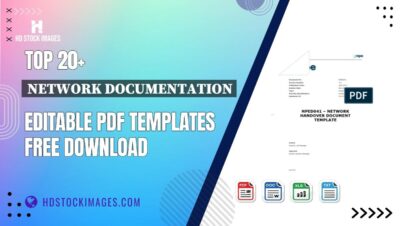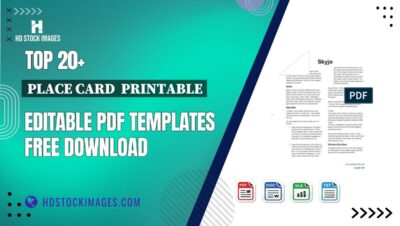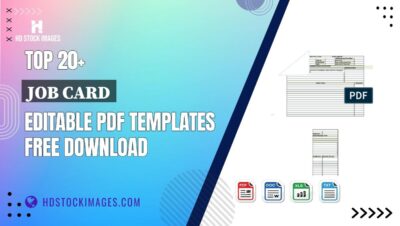We’ve all been there: you’re ready to dive into your favorite YouTube video, and suddenly, the dreaded buffering wheel appears. It's frustrating, especially when you’re excited to watch something. Let’s break down how buffering happens and what causes it, so you can enjoy uninterrupted streaming.
Understanding YouTube Buffering Issues

YouTube buffering occurs when your internet connection struggles to keep up with the streaming video. Essentially, your device needs a steady flow of data to play a video smoothly. When it doesn't get enough data, it pauses to "buffer," resulting in that annoying spinning icon. This can disrupt your viewing experience, leaving you staring at a frozen screen or a loading symbol instead of enjoying your content.
The buffering process isn't just about slow internet; it’s also linked to how YouTube's platform manages its streaming. When the video is played, it’s sent in small data packets. If the delivery of these packets is interrupted or slowed down, the video can’t continue playing seamlessly. Here are a few technical points to keep in mind:
- Bitrate: This refers to the amount of data transmitted per second. Higher quality videos (like 4K) require more data.
- Cache: Your device temporarily stores data to improve playback. A full cache can negatively impact streaming.
- Network Congestion: More users on the same network can slow down the connection, leading to buffering.
Understanding these factors can help you troubleshoot the issues more effectively. If you notice frequent buffering, it’s time to investigate your internet connection and device settings. Remember, even the most popular streaming platforms are not immune to these issues, so you're not alone in your buffering battles!
Also Read This: How to Cancel a YouTube Subscription
Common Causes of Buffering on YouTube
Buffering issues can stem from various sources. Identifying the root cause is key to resolving the problem and enjoying smooth streaming. Here are some common culprits:
- Slow Internet Speed: The most frequent cause of buffering is an inadequate internet connection. For HD videos, a minimum of 5 Mbps is recommended, while 4K videos require at least 25 Mbps.
- Wi-Fi Interference: Physical barriers (like walls and furniture) and electronic devices can interfere with your Wi-Fi signal. If you’re far from your router, this could lead to weak signals and buffering.
- Device Limitations: Older devices or those with limited processing power may struggle to handle high-resolution video playback. Upgrading your device or using an alternative can help.
- Background Applications: If you have multiple applications running that use bandwidth (like downloads, streaming music, or updates), they might be hogging your connection and causing buffering.
- Network Congestion: If you're on a shared connection (like in apartments or during peak hours), the overall speed might drop considerably, leading to buffering.
Addressing these issues can significantly improve your streaming experience. Consider testing your internet speed, repositioning your router, or closing bandwidth-hogging applications. With a little effort, you can minimize buffering and maximize your enjoyment of YouTube!
Also Read This: How to Bypass YouTube AdBlock Detection and Enjoy Content Without Interruptions
3. Steps to Improve Your Internet Connection
Buffering can be one of the most frustrating experiences while watching your favorite YouTube videos. Fortunately, there are several effective steps you can take to improve your internet connection and ensure a smoother streaming experience. Let’s dive into some practical tips!
1. Check Your Internet Speed
First things first, it’s essential to know your current internet speed. Use a speed test tool like Speedtest.net to measure your download and upload speeds. For seamless streaming, a minimum of 5 Mbps is recommended for standard definition and 25 Mbps for high definition.
2. Upgrade Your Internet Plan
If your internet speed is consistently below the recommended speeds, consider upgrading your internet plan. Contact your service provider to find out if there are faster plans available that suit your needs.
3. Use a Wired Connection
While Wi-Fi is convenient, a wired Ethernet connection tends to be more stable and faster. If you have the option, connect your device directly to the router using an Ethernet cable. This can significantly reduce latency and minimize buffering.
4. Optimize Wi-Fi Signal
If a wired connection isn’t possible, you can improve your Wi-Fi signal in the following ways:
- Place your router in a central location of your home.
- Avoid placing the router near walls or obstructions that can weaken the signal.
- Limit interference from other electronic devices like microwaves and cordless phones.
5. Manage Bandwidth Usage
Check if other devices on your network are using up bandwidth. Streaming on multiple devices can slow down your connection. Consider pausing downloads or limiting usage on other devices while you watch YouTube.
By following these steps to improve your internet connection, you can dramatically reduce buffering and enjoy your favorite content without interruptions. Now let’s move on to how you can optimize your YouTube settings for an even better viewing experience!
Also Read This: Does AdBlock for YouTube Contain Malware? What Users Should Know
4. Optimizing Your YouTube Settings
Once you’ve improved your internet connection, the next step is to optimize your YouTube settings. Did you know that tweaking a few configurations can enhance your streaming quality? Let’s explore some of the best practices!
1. Adjust Video Quality
Sometimes, your device might automatically select a higher video quality than your internet connection can handle. To change this:
- Click on the gear icon in the bottom right corner of the video player.
- Select “Quality” and choose a lower resolution, such as 720p or 480p, especially if you’re experiencing buffering.
2. Enable Data Saver Mode
If you’re watching videos on mobile, consider enabling Data Saver Mode. This feature reduces the quality of videos to minimize buffering:
- Go to the settings in the YouTube app.
- Navigate to “Data Saving” and toggle it on.
3. Clear Cache and Cookies
Accumulated cache and cookies can lead to performance issues. Regularly clearing them from your browser or app can help YouTube load faster:
- For browsers, go to settings and select “Clear browsing data.”
- For the app, check the app settings to clear cache.
4. Use YouTube’s Lite Version
If you’re on a slower internet connection, consider using YouTube Go. This app is designed for low-bandwidth conditions and allows users to choose video quality before watching, making it ideal for seamless streaming.
By optimizing your YouTube settings, you can enhance your viewing experience and minimize buffering. Combine these tips with a solid internet connection, and you’ll be ready to binge-watch your favorite content without a hitch!
Also Read This: Understanding Dr Disrespect’s YouTube Viewership and Audience Size
5. Using a Wired Connection vs. Wi-Fi
When it comes to streaming videos on YouTube, the choice between a wired connection and Wi-Fi can make a significant difference in performance. Let’s break down why a wired connection often trumps Wi-Fi when it comes to preventing buffering.
Stability is Key: A wired connection, using an Ethernet cable, provides a direct line to your router. This means you’re less susceptible to interference from other devices or physical barriers like walls. Wi-Fi signals can fluctuate based on the distance from the router and the number of devices connected. So, if you're serious about uninterrupted streaming, a wired connection is hard to beat.
Speed Matters: While modern Wi-Fi can deliver impressive speeds, a wired connection generally offers faster data transfer rates. This is crucial when streaming high-definition content. If you're trying to watch a 4K video, the last thing you want is for your connection to lag.
How to Set It Up:
- Run an Ethernet cable from your router to your streaming device.
- Check your device settings to ensure it's using the wired connection instead of Wi-Fi.
- Test your internet speed to confirm you’re getting the best performance.
If going wired isn’t feasible, don't worry! You can still optimize your Wi-Fi setup. Here are a couple of tips:
- Position your router in a central location to maximize coverage.
- Limit the number of connected devices while streaming.
In summary, while Wi-Fi is convenient, a wired connection provides the reliability and speed that can significantly reduce buffering during your YouTube streaming sessions. If you find yourself frequently frustrated by buffering, consider making the switch!
Also Read This: What to Do When You Can't Update YouTube: Troubleshooting Update Issues
6. Adjusting Video Quality for Better Streaming
Another effective strategy to prevent YouTube buffering is to adjust the video quality settings. While it’s tempting to always watch videos in the highest quality, sometimes dialing it back can make for a smoother experience.
Why Adjust Video Quality? High-definition videos consume more bandwidth. If your internet connection isn’t robust enough, you’ll likely experience buffering. So, lowering the resolution can help keep your stream running smoothly.
How to Adjust Video Quality:
- Open the YouTube video you want to watch.
- Click on the gear icon (Settings) in the bottom right corner of the video player.
- Select “Quality” and choose a lower resolution, such as 720p or 480p.
Smart Auto Quality: YouTube has a feature called Auto Quality that automatically adjusts the video resolution based on your connection speed. This is great if you want a hassle-free experience, but keep in mind that it might switch to a lower quality during moments of network instability.
Recommended Resolutions by Speed:
| Internet Speed | Recommended Video Quality |
|---|---|
| Under 3 Mbps | 144p - 360p |
| 3 - 10 Mbps | 480p |
| 10 - 25 Mbps | 720p |
| Above 25 Mbps | 1080p - 4K |
In conclusion, adjusting your video quality according to your internet speed can significantly enhance your YouTube experience. If you're facing frequent buffering, consider lowering the resolution, and you'll likely find that your viewing experience becomes much more enjoyable!
Also Read This: How to Upload Video to YouTube from iPad: A Complete Guide
7. Clearing Cache and Cookies for Enhanced Performance
Have you ever experienced that frustrating moment when you're ready to dive into your favorite YouTube video, only to be greeted by endless buffering? One often-overlooked solution is regularly clearing your cache and cookies. This simple action can make a world of difference in your streaming experience!
Your web browser stores data from the sites you visit, which helps them load faster on subsequent visits. However, over time, this cache can become cluttered, potentially causing slowdowns and buffering issues. Here’s how you can clear your cache and cookies:
- For Google Chrome: Go to the three dots in the top right corner, select "More Tools," then "Clear Browsing Data." Make sure to check "Cookies and other site data" and "Cached images and files." Click "Clear data."
- For Firefox: Click the three horizontal lines in the upper right corner, select "Options," then "Privacy & Security." Under "Cookies and Site Data," click "Clear Data."
- For Safari: Go to "Safari" in the menu bar, select "Preferences," then "Privacy." Click on "Manage Website Data" and remove all data.
By clearing your cache and cookies, you’re not just freeing up space but also ensuring that your browser loads the latest version of YouTube, which often includes performance updates. It’s a small step that can lead to a smoother streaming experience!
8. Exploring Third-Party Tools and Extensions
If you're looking to take your streaming game to the next level, consider exploring various third-party tools and browser extensions. These can offer additional features that enhance your YouTube experience and help mitigate buffering issues.
Here are a few popular options:
- Video Speed Controller: This Chrome extension lets you adjust the playback speed of YouTube videos easily. So if your connection is a bit shaky, you can slow down the video to ensure smooth playback.
- Enhancer for YouTube: This powerful tool offers a variety of features like ad-blocking, custom themes, and even playback controls that can optimize your viewing experience. Users rave about it for making YouTube less intrusive!
- uBlock Origin: A robust ad-blocking extension that can help reduce interruptions during streaming. Fewer ads mean less data being loaded, which can lead to smoother playback.
When choosing tools or extensions, make sure to check user reviews and ratings. This will give you a clearer idea of their effectiveness. Also, always prioritize extension security; stick to well-reviewed options from reliable sources to keep your browsing experience safe.
In conclusion, combining these tools with practices like clearing your cache can significantly improve your YouTube streaming experience. So why not give them a try? You might find yourself enjoying those videos like never before!
 admin
admin








